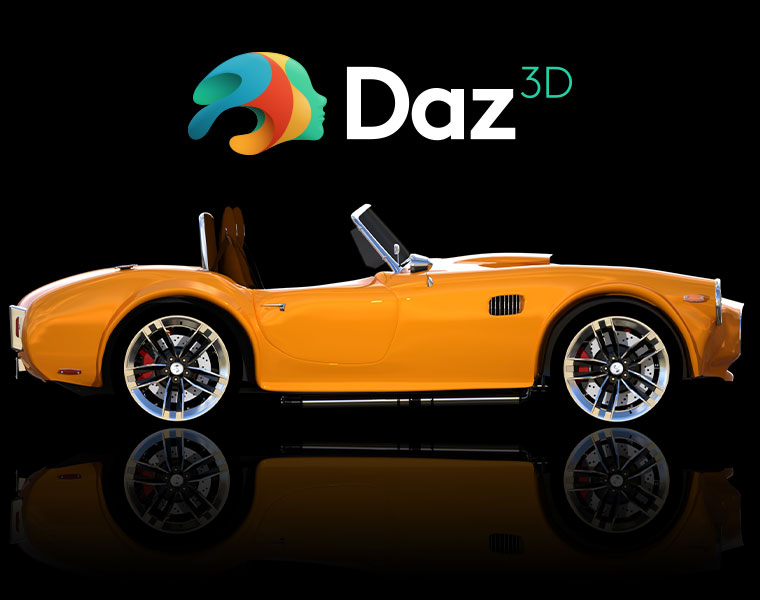
Once you’ve designed your custom 3D model in Daz Studio, then prepared and printed it, your figure will look far from finished. It’ll look rough, and depending on its shape, it may have supports still attached to it. At this point, it’s time for the painting process.
This is what will bring your model to life and create a finished product you can proudly display. But do you know how to paint a 3D printed figure?
Here are seven tips for painting 3D prints that will give you spectacular results!
1. Use the GamePrint Plugin
If you want to take the hardest part off your hands, consider using the free-to-download GamePrint: 3D Print Plugin for Daz Studio. You’ll customize your 3D model in Daz Studio to your liking and then submit an order through GamePrint.
They’ll take care of the mesh repair and optimization, and you’ll choose the print setting: Primer, Single Color, Fully Color Printed, or Collectible. These options can give you everything from a primed 3D print object ready for paint to a hand-painted collectible.
2. Know Your 3D Print Material
The kind of 3D print material you use will affect how you smooth, prime, and paint your figure. For example, acetone works well with ABS for smoothing, and ethyl acetate is more effective on PLA. Thankfully, most paints are compatible with the two thermoplastics, so you can use acrylics, enamels, lacquers, and oils. However, we recommend acrylics for 3D print paint beginners since it dries fast and is easy to clean.
If you’re using a different material for your figure than ABS or PLA, you will have to research further to see what works best.
3. Optimize the Object
If you want the best painted 3D print figure, you have to optimize the object first. This includes trimming off any supports or rough spots with a knife or pliers and sanding it for a smooth surface. You can either smooth the material with acetone or ethyl acetate or use fine-grit sandpaper.
If you use sandpaper, work in a well-ventilated area with a mask, and be sure to use circular motions and water to avoid obvious scratches. Also, use a brush or water to clean dust from the surface when you finish.
4. Prime
Primer is a must before painting your object. It smoothes the surface and prevents the printed material from absorbing the paint. Be sure to use a primer that’s compatible with your material. We recommend using a spray primer as it covers the entire surface smoothly and quickly.
After the first layer of primer, you may notice areas that need additional sanding. Repeat the sanding process above, including dust removal, and add another thin layer of primer.
5. Plan Before You Paint
Having a plan is pivotal to learning how to paint 3D prints. You’ll want to consider if you’re painting with one color or multiple, if you’re using spray paint, an airbrush, or a paintbrush, and if you want a matte or glossy finish.
Use painter’s tape to cover areas you don’t want to paint a certain color, and use something stiff like a credit card to get the tape into the figure’s creases.
6. Paint
Painting a 3D printed figure may be the most time-consuming part of the process as you’ll want to apply multiple layers for the richest color. A black undercoat is best for dark hues, while a white undercoat will make light colors pop. Keep each layer thin to avoid an uneven surface and running paint. Of course, let each layer dry completely before starting the next one.
Use a paint stand if possible to avoid smudging or adding fingerprints to the paint, and work in a well-ventilated area.
7. Apply Clear Coat
Though optional, adding a clear coat will add a glossy or matte finish and protect your 3D print object for years to come. Apply one or two coats, waiting 10 minutes or more for it to dry before starting the next coat. Some suggest waiting several hours to a week before moving or handling your completed figure, but after this step, you’re done!
Plan Your Next 3D Print Paint Project
Congrats! You’ve gone through all the steps to paint 3D prints. It’s an art form that can turn a model from the Daz shop into a collectible figurine you can be proud of. Now’s the time to enjoy your new figure and make plans for your next project!
Subscribe to Our Email Newsletter
Stay up-to-date on all the latest news from the 3D printing industry and receive information and offers from third party vendors.
You May Also Like
Gorilla Sports GE’s First 3D Printed Titanium Cast
How do you help a gorilla with a broken arm? Sounds like the start of a bad joke a zookeeper might tell, but it’s an actual dilemma recently faced by...
Nylon 3D Printed Parts Made More Functional with Coatings & Colors
Parts 3D printed from polyamide (PA, Nylon) 12 using powder bed fusion (PBF) are a mainstay in the additive manufacturing (AM) industry. While post-finishing processes have improved the porosity of...
$25M to Back Sintavia’s Largest Expansion of Metal 3D Printing Capacity Since 2019
Sintavia, the digital manufacturing company specializing in mission-critical parts for strategic sectors, announced a $25 million investment to increase its production capacity, the largest expansion to its operations since 2019....
Velo3D Initiates Public Offering in a Bid to Strengthen Financial Foundations and Drive Future Growth
Velo3D (NYSE: VLD) has been among a number of publicly traded 3D printing firms that have attempted to weather the current macroeconomic climate. After posting a challenging financial report for 2023,...


































